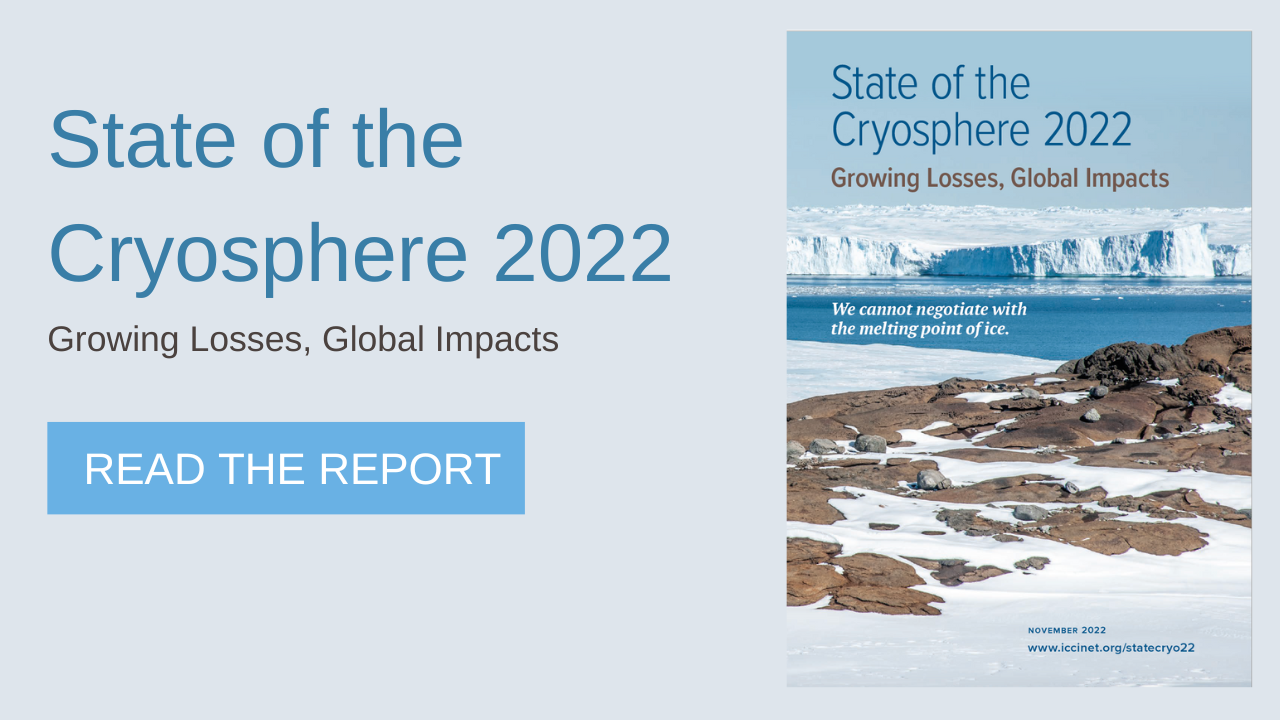Home
What is the Cryosphere?
The cryosphere is a term for the regions of our globe which are covered in ice and snow – either seasonally or year-round. Climate change is happening in the cryosphere faster and more dramatically than anywhere else on earth.
LEARN MOREThe Cryosphere
Climate change is happening faster and in a dramatically more visible way in the Earth’s cryosphere: the snow and ice-dominated regions around both the North and South Poles, and in high mountains. Whether high latitude or high altitude, temperatures in these places already have warmed by at least twice the global average. As a result, the ecosystems and communities in these fragile and beautiful places are disintegrating, in some cases right beneath our feet, as ice and ground (permafrost) melt away.
But the greatest threat of this rapidly-warming cryosphere lies no longer in these regions themselves. Instead, the most catastrophic and wide-ranging impact of our disintegrating cryosphere is on the entire Earth: sea-level rise from melting glaciers and ice sheets; loss of snowpack for water needs; polar seas and fisheries whose cold waters acidify faster, with damage to polar shell-building animals already today; carbon releases from permafrost the size of a top-20 greenhouse gas emitter, plus shrinking sea ice in the Arctic at all times of year: both impacts that are warming the planet faster and further.
Most of these impacts from a disintegrating cryosphere cannot be rolled back, even should we manage to pull temperatures down again. Our only workable option is never to let temperatures get that high at all. Protection of the cryosphere is not only about protecting the peoples and species that live there. It is about protecting all of us.
Our Work
We believe that much can be accomplished if many partners work together, and ICCI worries less about credit than accomplishing needed solutions at all levels. ICCI therefore strives to work innovatively, yet without fanfare and in a sustained manner, to create new partnerships and approaches together with cryosphere scientists, governments, non-governmental organizations and the private sector – yet always with the clock ticking for the cryosphere’s survival; and therefore, that of the planet, at least as it has existed for the past 3 million years.
The cryosphere also creates the possibility of complementary climate solutions that benefit those living nearby, especially Arctic Indigenous and mountain peoples. For example, black carbon (soot) – whether from a small cooking or heating stove, or a massive wildfire — lands on ice and snow and causes it to melt more quickly; so reductions can help slow snow and ice loss, while also aiding adaptation in a rapidly changing climate and improving human health. Reductions of methane from human activity might also help counter emissions of this powerful greenhouse gas coming from thawed permafrost.
ICCI seeks to find such new and integrated solutions to benefit local mountain and Arctic communities. In particular, we have worked since 2010 to reduce black carbon emissions from agricultural sector burning, and from heating and cooking stoves. We must be clear however: the main focus of emissions reductions lies in reducing use of fossil fuels, aiming at the IPCC recommendation of around a 50% decrease by 2030; reaching carbon neutrality by 2050; and negative emissions thereafter, to remain with the 1.5°C “guardrail” of the Paris Agreement. Every fragment of temperature rise counts, and will reduce global loss and damage for many future generations – and emissions experts are clear that a 1.5°C future remains within reach, if only we choose to act in time.
ICCI's ApproachSupport ICCI
ICCI elevates the voices of scientists and local communities from Arctic and mountain regions to reach governments, nonprofits, and international forums. With your support, we can translate the cryosphere’s message of urgent climate action into clear and actionable steps for policy makers. You can help save Earth’s frozen regions by supporting our work through the GiveOne Foundation; all private donations go directly to ICCI. Thank you!
To donate, please contact the Director of ICCI at info@iccinet.org.
Cryosphere Capsules
ICCI publishes a weekly newsletter for policy makers summarizing the latest scientific findings in cryosphere and climate research. Read our most recent issues on the Cryosphere Capsules page, and subscribe below to receive them in your inbox every Friday.














